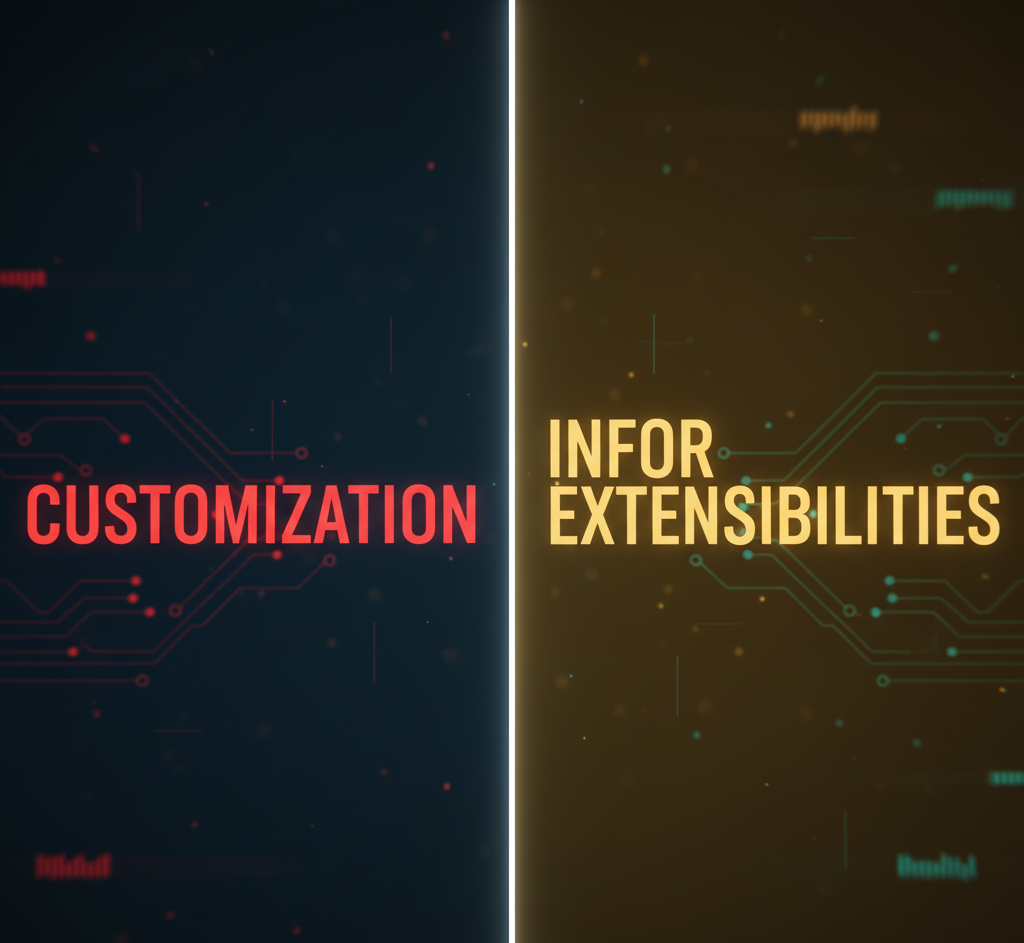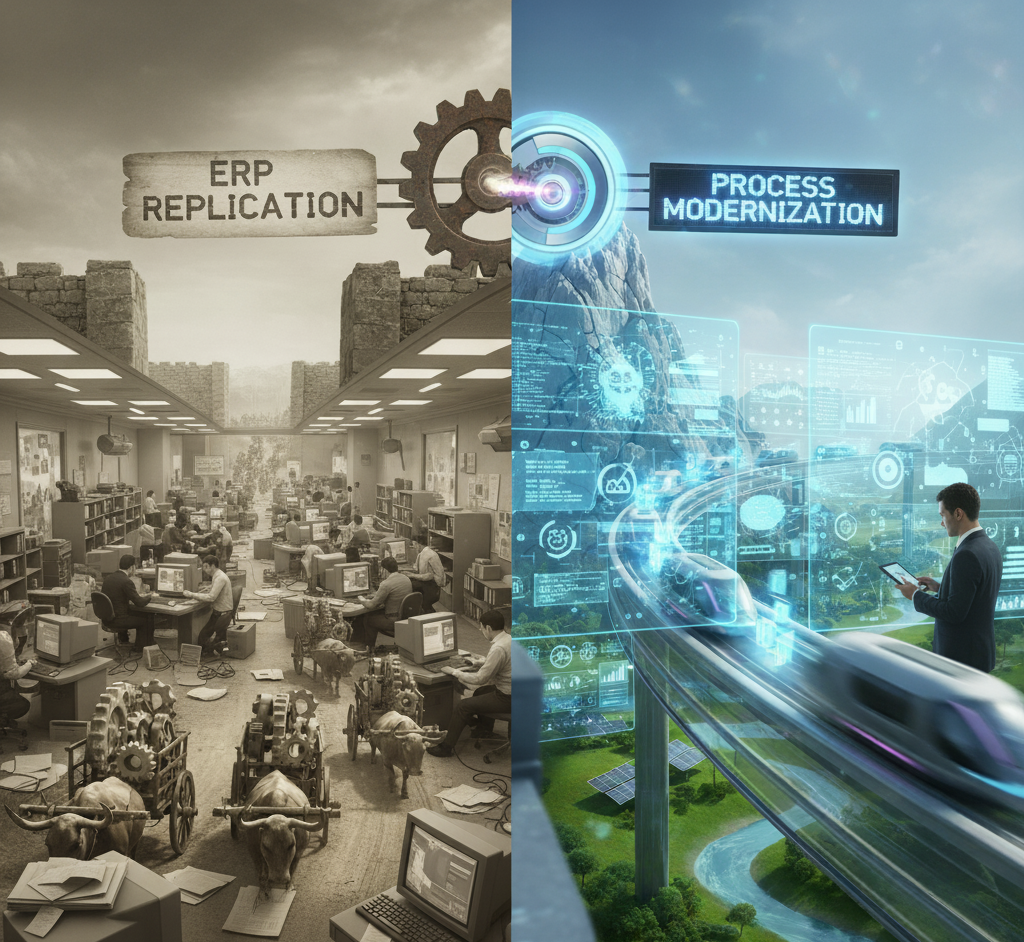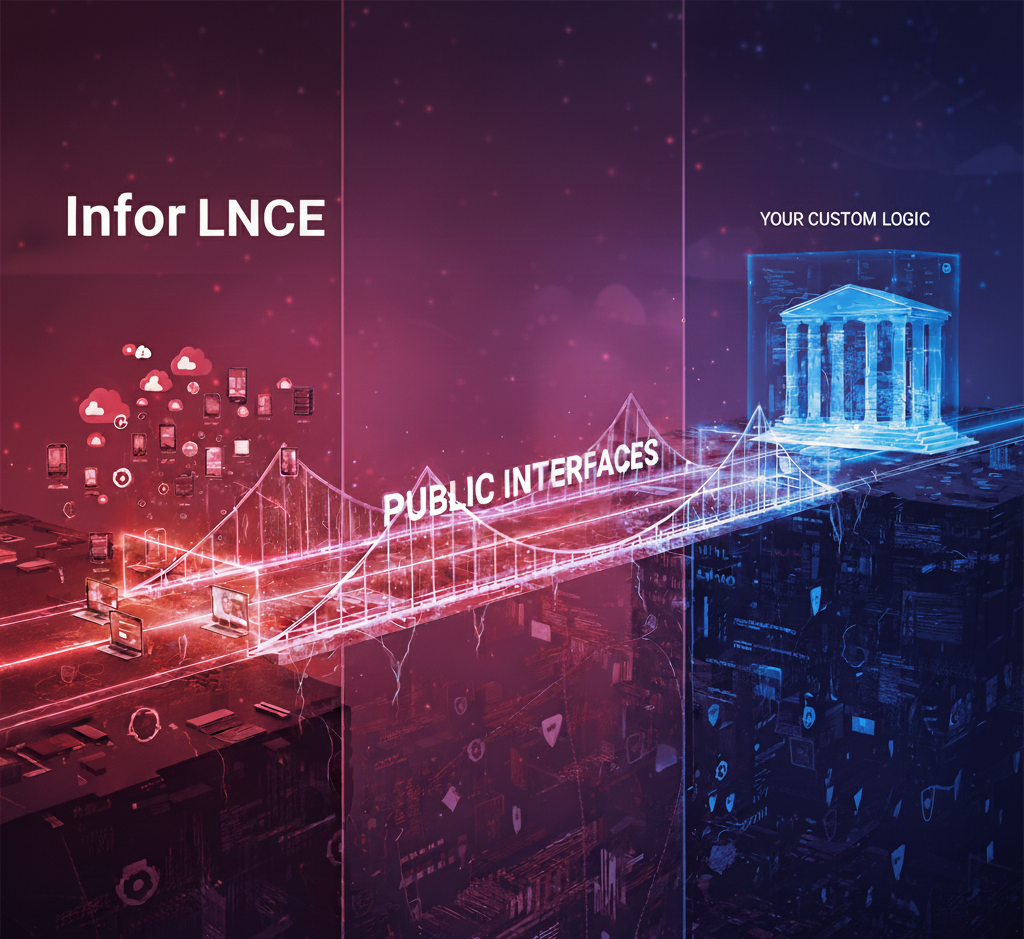Cloud ERP: Redefining Customization Through Extensibility

One of the biggest hurdles preventing companies from moving away from their trusted legacy ERPs isn’t data privacy or fear of the cloud itself. It’s a much deeper, more operational fear: the belief that a multi-tenant cloud ERP will force them to abandon the unique, highly customized business processes they’ve spent decades perfecting.
Let’s be honest: this concern isn’t unfounded. But it often points to a different, more fundamental challenge.

The Real Bottleneck: Process Replication vs. Process Modernization
Often, the primary roadblock in a cloud migration isn’t the new software’s limitations, but the resistance to change. The instinct is to “lift and shift”—to force-fit every current workflow into the new system, replicating the old structure within a modern framework. This approach is not only inefficient but misses the entire point of moving to a new ERP.
An ERP conceived and developed decades later, like Infor LN Cloudsuite, already incorporates most of the advanced functionalities that businesses once had to build themselves. The first, most critical step is to embrace the standard, best-practice processes offered by the new system. This alone often covers most of a company’s needs in a more efficient way.
But what about the remaining part? What about the truly unique processes that deliver a real competitive advantage?

Extensibility: The Cloud’s Answer to Customization
This shift towards extensibility is the technical foundation for a broader, more powerful business strategy: the Composable ERP. As I discussed in a previous article, this is about building an agile ecosystem of best-of-breed applications around a solid ERP core, rather than relying on a single monolithic system.
This is where the myth of “no customizations” crumbles. A modern cloud ERP doesn’t forbid you from tailoring the system to your needs; it simply provides a safer, more structured, and future-proof way to do it. This is the world of Extensibility.
In the early days of Infor LN Cloud Edition, the options for extending the system were limited. This created a perception of rigidity that, for some, still lingers today. However, the platform has matured at an incredible pace. Today, the toolkit for extending LN is vast, powerful, and continuously growing.
The cornerstone of this strategy is the Public Interface.
Public Interfaces: The Safe Bridge to Your Custom Logic
Think of a Public Interface as a officially supported “door” into Infor LN’s core business logic. It’s a standard API that allows you to perform actions—create a sales order, update an item’s master data, post a financial transaction—from an external system or a custom application, all without touching the standard source code.
This means you can:
- Integrate a custom-built MES on your factory floor that reports production directly into LN.
- Connect a specialized third-party logistics platform that updates shipment statuses in real-time.
- Build a small, tailored application for a unique quality control process that reads and writes data directly from the ERP.
- Automate internal processes by extending standard functionalities. For example, instead of manually performing several steps to release an order, a trigger can call the OutboundOrderLine AutomaticOutboundProcessing Public interface to handle the outbound flow automatically.
This approach provides the best of both worlds. By keeping the core ERP standard, you guarantee that your system remains “evergreen,” seamlessly receiving the constant stream of innovation and updates from Infor.
At the end of the day, no one wants to invest time and money in a new ERP only to see it become obsolete in a few years due to missed updates. At the same time, you retain complete freedom to build the unique functionalities that set your business apart using the safe bridge of extensibility.
The conversation is no longer about whether you can replicate your critical processes in the cloud. The real questions are: “which of our old processes are already handled better by the new standard?” and “How can we use modern tools to build the unique, value-adding extensions we truly need?”
Investing time in answering these questions, rather than forcing old customizations into the new ERP, reveals a crucial truth: it is far more effective to adapt people to new functionalities than to adapt the software to old habits.
Written by Andrea Guaccio
October 22, 2025